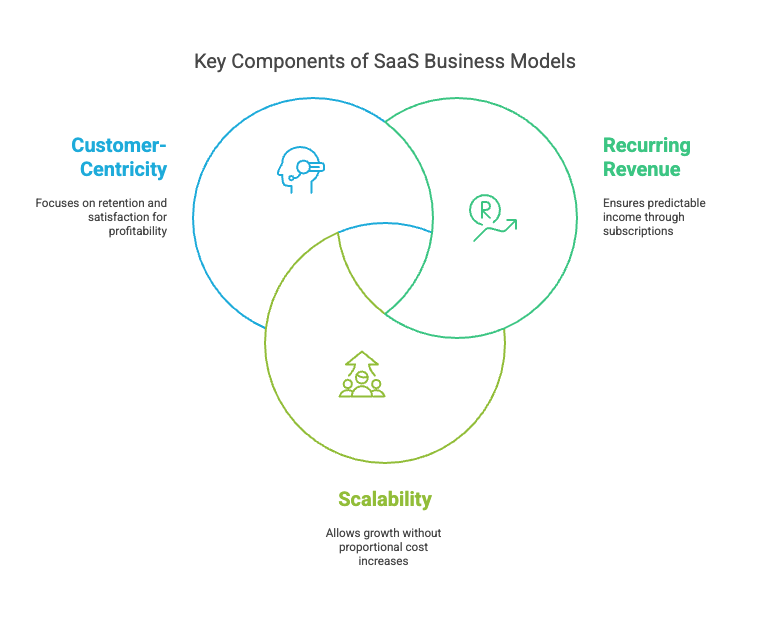Module 6: Financial Mastery for CSMs: Driving Growth & Retention with Metrics
Learning Objectives:
- Understand key financial metrics like ARR, NRR, and churn.
- Align CSM performance with company goals through accurate forecasting.
- Use data insights to identify renewal and expansion opportunities.
1. Understanding the SAAS Business Model
Introduction:
The SaaS (Software as a Service) business model has revolutionized how software is developed, delivered, and monetized. Unlike traditional software models that rely on one-time purchases, SaaS businesses operate on recurring revenue streams, offering customers continuous access to their products through subscription-based pricing.
This model’s success hinges on three fundamental pillars: the ability to scale rapidly, a strong customer-centric approach, and the capability to deliver consistent value over time. By understanding these core principles, we can uncover what makes SaaS businesses unique, explore their key characteristics, and examine how they drive long-term growth and sustainability.

1. Characteristics of SaaS Businesses
1. Recurring Revenue
SaaS businesses primarily generate recurring revenue through subscription-based models. Customers pay for ongoing access to software, often monthly or annually, rather than making a one-time purchase.
- Importance for Stability:
This model ensures a predictable revenue stream, which is critical for forecasting and planning. For example, a company with 1,000 customers paying $100 per month has $100,000 in Monthly Recurring Revenue (MRR), providing a stable foundation to project cash flow and investments. - Customer Success Relevance:
Renewals and upgrades are essential to maintaining and growing recurring revenue. CSMs ensure customers continue to derive value, reducing churn and driving renewals.
2. Scalability
SaaS solutions are inherently scalable, enabling businesses to serve a growing customer base without significant increases in cost.
- Cloud Infrastructure:
SaaS businesses leverage cloud platforms to host and deliver their software, allowing seamless scalability without needing physical infrastructure. Example: As a SaaS company grows from 1,000 to 10,000 customers, it can scale its services without directly increasing operational costs proportionately.
- Customer Success Relevance:
As the customer base grows, CSMs ensure customers receive consistent support by adopting scalable customer success practices (e.g., digital engagement tools, webinars, and automated health checks).
3. Customer-Centricity
SaaS businesses thrive by delivering continuous value to customers, as the subscription model means customers can easily churn if dissatisfied.
- Focus on Adoption and Retention:
Unlike traditional software models, SaaS companies don’t achieve profitability immediately after a sale. Profitability depends on customers staying long enough to offset acquisition costs and generate lifetime value (CLV). Example: If a customer churns after 3 months, the company may not recover the cost of acquisition, leading to losses. - Customer Success Relevance: CSMs play a pivotal role in ensuring adoption, satisfaction, and retention:
- Onboarding: Helping customers realize value quickly.
- Proactive Engagement: Monitoring health scores to identify risks and opportunities.
- Advocacy: Building trust to encourage renewals and expansions.